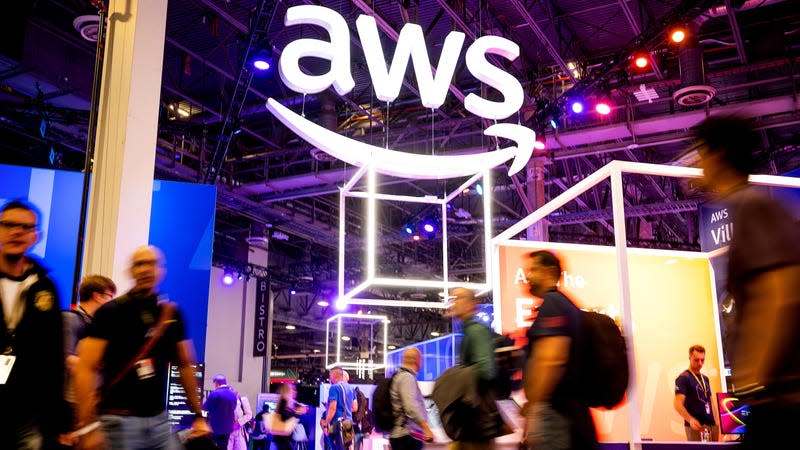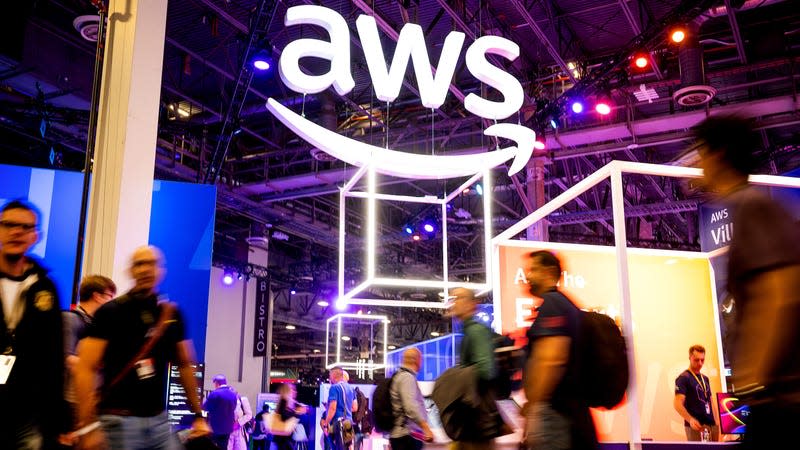
Amazon just unleashed a cloud-based rival to take on the likes of Microsoft and Google in the generative artificial intelligence (AI) wars.
The company yesterday (Apr. 13) launched Bedrock, a new service for “building and scaling” generative AI applications. Think of it as cloud-based alternative to OpenAI’s conversational chatbot ChatGPT or text-to-image AI software DALL·E, but with more options.
Read more
Instead of building massive AI models in house, Amazon’s Bedrock will give customers “easy access to foundation models (FMs)” from top AI startup model providers, which they can customize with their own data and deploy in their apps. These include fledgling startups like AI21, Anthropic, and Stability AI. Amazon’s own Titan family of FMs is also on the roster.
“Bedrock is the easiest way for customers to build and scale generative AI-based applications using FMs, democratizing access for all builders,” Swami Sivasubramanian, vice president of data and machine learning at Amazon Web Services (AWS), wrote in a blogpost. Consultancy and IT firms like Accenture, Deloitte, Infosys, and Slalom are already building practices to “help enterprises go faster with generative AI,” he added.
The goal is to equip AWS customers across industries such as healthcare, finance, tech, manufacturing, filmmaking, and more, with “flexibility and choice to use the best models for their specific needs,” the company said.
The need for Amazon Bedrock, according to CEO Andy Jassy
“Most companies want to use these large language models, but the really good ones take billions of dollars to train and many years and most companies don’t want to go through that. So what they want to do is they want to work off of a foundational model that’s big and great already and then have the ability to customize it for their own purposes. And that’s what Bedrock is.”—Amazon CEO Andy Jassy to CNBC on Apr. 13, 2023.
A non-exhaustive list of models available via Amazon Bedrock
-
AI21 Labs’ Jurassic-2: The Tel Aviv-based startup offers Multilingual large language models for text generation in Spanish, French, German, Portuguese, Italian, and Dutch.
-
Anthropic’s Claude: The startup, founded by former OpenAI employees and backed by Google, builds large language models for conversations, question answering, and workflow automation based on research into training honest and responsible AI systems
-
Stable Diffusion: Generation of unique, realistic, high-quality images, art, logos, and designs, which has been used to make animated films, among other things.
-
Amazon Titan: Text summarization, generation, classification, open-ended Q&A, information extraction, embeddings and search
Amazon and generative AI, by the digits
25 years: Time Amazon has invested “heavily in the development of AI and ML, infusing these capabilities into every business unit”
More than 100,000: Customers using dozens of AWS AI and ML services offered in the cloud
More than 30: The number of different ML systems powering Amazon’s voice assistant Alexa
1,600x: The increase in the size of the largest pre-trained models between 2019 and now (in general, not just for Amazon)
A non-exhaustive recent timeline of Microsoft (🖥), Google (🔍) and Amazon’s (📦) generative AI efforts
🖥 July 22, 2019: Microsoft’s first investment in OpenAI, the company behind ChatGPT and text-to-image generator DALL-E, is $1 billion. The two forge an exclusive partnership.
🖥 Nov. 30, 2022: OpenAI releases its conversational chatbot ChatGPT for public use, sparking both curiosity and concern.
🖥 Jan. 16, 2023: Microsoft announces the “general availability” of Azure OpenAI Service, which has been available to a handful of customers since it was first teased in 2021. It includes dialogue-based chatbot GPT-3.5, natural-language-to-code converter Codex, and DALL•E 2, which can create realistic images and art from a description in natural language.
🖥 Jan. 24: Microsoft confirms a third multi-billion dollar investment in OpenAI. It doesn’t disclose the amount but a Semafor report pegs it at a whopping $10 billion.
🖥 Jan. 31: OpenAI says it has “trained a classifier to distinguish between text written by a human and text written by AIs.”
🔍 Feb. 6: Alphabet CEO Sundar Pichai announces the company will open Bard, powered by its Language Model for Dialogue Applications (or LaMDA)—“to trusted testers,” with the intention of releasing to the general public shortly afterwards.
🖥 Feb. 7: Microsoft hosts a surprise event to reveal a new version of its search engine Bing developed with OpenAI, which is “running on a new next-generation large language model. One that is much more powerful than ChatGPT and that is customized specifically for search,” as per Yusuf Mehdi, Microsoft’s corporate vice president and consumer chief marketing officer.
🔍 Feb. 8: Google’s Bard unveiling event, live-streamed from Paris, falls flat after an inaccurate an incorrect description in an ad for Bad dampened excitement.
📦 April 4: AWS announces a 10-week generative AI accelerator program that’ll aid the “most promising” startups in the sector with cloud credits, mentorship, networking events, and more. At the end, they can pitch to investors.
📦 April 14: Amazon announces Bedrock.
Related stories
🌐 ChatGPT is getting more nuanced
👀 The company that created ChatGPT is releasing a tool to identify text generated by ChatGPT
🎨 How designers are using ChatGPT and DALL-E to fast track projects
More from Quartz
Sign up for Quartz’s Newsletter. For the latest news, Facebook, Twitter and Instagram.
Click here to read the full article.










